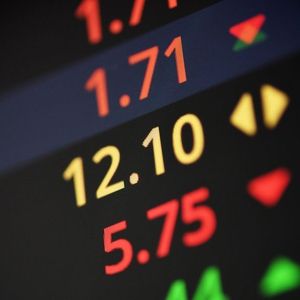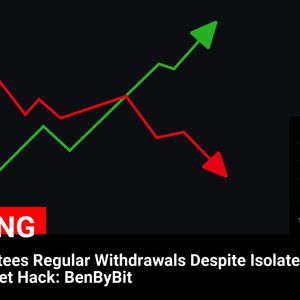Is gold back in the spotlight? While the US enjoyed a tranquil President’s Day holiday, the gold price quietly staged a comeback, hinting at underlying market currents that could soon ripple through the crypto world and beyond. Despite thin trading volumes due to the US holiday, gold demonstrated resilience, climbing by 0.56%. But what’s fueling this rebound, and is it a flash in the pan or the start of a more significant rally? Let’s delve into the factors driving gold’s performance and what it means for investors. Why is the Gold Price Rebounding During the US Holiday Trade? Monday saw a notable uptick in the gold price , reaching $2,898 after dipping to $2,878 earlier. This gain occurred even as US markets were closed for Presidents’ Day, leading to reduced trading activity. Several factors are contributing to this upward movement: Geopolitical Uncertainty: Ongoing global tensions continue to bolster gold’s appeal as a safe-haven asset. In times of uncertainty, investors often flock to gold, seeking stability amidst geopolitical storms. US Trade Policies: Policies aimed at reducing the US deficit are also playing a role. Such policies can impact currency valuations and broader economic sentiment, indirectly benefiting gold. Central Bank Demand: The World Gold Council (WGC) reported that central banks maintained robust gold purchases for the third consecutive year in 2024, signaling long-term confidence in gold as a reserve asset. This sustained demand provides a strong foundation for gold prices. Last Friday’s significant loss for gold now appears to be a temporary setback, with the overall outlook remaining positive. The precious metal’s safe-haven appeal is proving resilient, even amidst fluctuating economic data. Volatility in Check, But Undercurrents Remain The US holiday contributed to lower market volatility , creating a seemingly calm trading environment. However, this tranquility might be deceptive. While the CBOE Volatility Index (VIX), often called the “fear gauge,” might suggest calmness, undercurrents of economic uncertainty are still present. Consider these points regarding market volatility and gold: Mixed US Economic Data: Recent US data presents a mixed bag. While CPI and PPI figures came in slightly hotter than expected, retail sales disappointed. This mixed data creates uncertainty about the future pace of economic growth and inflation, factors that can drive gold prices. Federal Reserve Caution: Fed officials are adopting a cautious stance as inflation remains above the 2% target. Philadelphia Fed President Patrick Harker emphasized a “steady” approach to monetary policy, and Governor Michelle Bowman acknowledged ongoing upside risks to inflation. Treasury Yields and Real Yields: The US 10-year Treasury bond yield saw a dip, and real yields also declined. Real yields have an inverse relationship with gold prices; when real yields fall, gold tends to become more attractive as an investment. Despite the holiday lull, these factors suggest that volatility could return as markets fully digest the latest economic signals and prepare for upcoming Fed communications. What to Expect from FOMC Minutes and Fed Speakers? This week is packed with events that could inject fresh volatility and direction into the gold market. Keep a close watch on these key events: FOMC Meeting Minutes: The release of the latest Federal Open Market Committee (FOMC) Meeting Minutes will be closely scrutinized for insights into the Fed’s thinking on inflation, interest rates, and the overall economic outlook. Any hawkish or dovish signals can significantly impact gold prices. Fed Speakers: Numerous Fed speakers are scheduled to make public appearances this week. Their comments will provide further clues about the central bank’s policy path and its response to the latest economic data. Pay attention to any shifts in tone or emphasis. Key US Economic Data: Beyond the FOMC Minutes and Fed speak, important US economic data releases are on the horizon, including housing data, Initial Jobless Claims, and S&P Global Flash PMIs. These data points will offer a clearer picture of the economy’s health and influence expectations for Fed policy. Traders are keenly awaiting these events to gauge the Federal Reserve’s next moves and their potential impact on the dollar and, consequently, the gold price . Fed Speakers and Economic Data: Potential Market Movers The upcoming appearances of Fed speakers are particularly important. Their commentary can offer real-time insights into the Fed’s evolving stance. Here’s what to watch for: Policy Outlook: Listen for any hints about the future direction of monetary policy. Are Fed officials leaning towards further rate hikes, or are they becoming more comfortable with the current stance? Inflation Concerns: Pay close attention to how Fed speakers address persistent inflation. Do they see inflation as a temporary issue, or are they concerned about it becoming entrenched? Economic Growth Assessment: Their views on the strength of the US economy will also be crucial. A strong economy might justify a more hawkish stance, while concerns about slowing growth could lead to a more dovish outlook. Coupled with Fed speakers , the release of US economic data will paint a more comprehensive picture. Strong data could reinforce the case for a hawkish Fed, potentially putting downward pressure on gold, while weaker data might support gold’s upward trajectory. Technical Outlook: Gold Price Eyes $2,900 and Beyond From a technical perspective, the gold price uptrend remains intact. However, buyers need to decisively break through the $2,900 barrier to fuel further gains. Key technical levels to watch are: Resistance Levels: $2,900: Immediate hurdle. $2,942: Year-to-date (YTD) high. $2,950 and $3,000: Subsequent ceilings if the uptrend gains momentum. Support Levels: $2,877: February 14 swing low. $2,864: February 12 low. $2,790: October 31 swing high – a deeper support level. A daily close above $2,900 would be a bullish signal, increasing the likelihood of testing higher resistance levels. Conversely, failure to hold above $2,900 could lead to a retest of lower support levels. Gold FAQs: Unveiling the Precious Metal’s Allure Why do people invest in Gold? Gold’s enduring appeal stems from its historical role as a store of value and medium of exchange. Beyond its aesthetic value, gold is considered a safe-haven asset, especially during turbulent times. It acts as a hedge against inflation and currency depreciation, independent of any single issuer or government. Who buys the most Gold? Central banks are the largest gold holders. They use gold to diversify reserves, bolster currency strength, and enhance economic credibility. Emerging economies like China, India, and Turkey are rapidly increasing their gold reserves. How is Gold correlated with other assets? Gold typically exhibits an inverse correlation with the US Dollar and US Treasuries, both major safe-haven assets. A weaker dollar often boosts gold prices. Gold also tends to move inversely to risk assets; stock market rallies can weaken gold, while market sell-offs often favor it. What does the price of Gold depend on? Numerous factors influence gold prices. Geopolitical instability, recession fears, and interest rate movements are key drivers. Lower interest rates tend to support gold, while higher rates can weigh it down. However, the US Dollar’s strength is paramount; a strong dollar can restrain gold prices, while a weak dollar can propel them higher. Disclaimer: This analysis is for informational purposes only and should not be considered investment advice. Trading in financial markets involves risks, and you should conduct your own research before making any investment decisions. To learn more about the latest Forex market trends, explore our articles on key developments shaping Gold liquidity in the current economic climate.



















